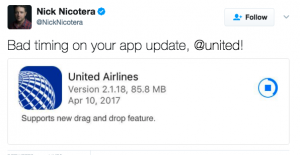
by Todd Stein | May 3, 2017 | Blog
Who watches the watchdogs? It’s a phrase that conjures the creation of police commissions or intelligence oversight committees. But if you’re a believer in the sanctity of the Fourth Estate (and God knows we need them now more than ever), then the watchdogs who need watching are journalists. And no one watches or analyzes, or critiques journalists in greater depth and with sharper insight than the Nieman Journalism Lab at Harvard University.
The purpose of the Nieman Lab is to figure out how journalism can adapt to the Internet Age while remaining relevant and profitable. Recently, in “Newsonomics: The 2016 Media Year by the Numbers and a look toward 2017,” the Nieman Lab’s Ken Doctor turned up some fascinating trends that will both bedevil and delight those of us in PR and business who strive daily, with more or less success, to earn the media’s adoration and praise.
Have Your Fake and Eat it Too
The bedeviling side of Nieman Lab’s look back at 2016 is the messy shift from print to digital, a transformation long underway that is weighing ever more heavily on the news media. The industry-rocking trend of 2016, of course, was the rise of “fake news” or rather the rise in awareness of fake news, thanks to the Presidential Election. Doctor takes some easy swipes at Mark Zuckerberg for his much-publicized claim that 99% of Facebook’s content isn’t fake. “Ever heard a publisher proudly proclaim, “We get it right 99 times out of a hundred?” he asks.
But the fake news phenomenon isn’t going to have much impact on the field of technology PR. More significant for the business of Media Relations is the sharp increase in the number of PR “targets” as the Internet continues to make it easier for small, independent content producers to compete with the mainstream media. This democratization of publishing and broadcasting offers both more opportunities and more diluted opportunities for getting the word out about a company, a product, or a thought leader.
The Young and the Restless
Here’s Nieman Lab’s take on one of the biggest online outposts, a not-so-new media that has finally come into its own after a decade of unrealized promise and that is quickly disrupting its Old Media birthplace, radio:
“Podcasting now reshuffles the deck, mixing and matching talent on scheduled airtime and on demand, with unpredictable consequences. The movement of younger talentwithin the emerging podcast economy poses both a great opportunity and threat for public radio as we know it, and is a boon for newer entrants like Gimlet Media, Panoply, This American Life/Serial, and Midroll Media.”
A related trend that accelerated in 2016 and into 2017 is the flight of ad revenue from mainstream publishing as advertisers spread their dollars online in search of eyeballs (and now ears, too).
“The Wall Street Journal lost more than a fifth of its overall advertising revenue in the third quarter of 2016,” Doctor writes. Other blue ribbon outlets suffered similar losses: The New York Times saw print ad revenue decline by 18 percent; McClatchy reported a 17 percent loss; Gannet lost 15 percent; and Tronc (the former Tribune Company) lost 11 percent.
To compensate for those huge loses, publishers are seeking revenue directly from readers in the form of digital subscriptions and add-ons. That requires high-quality content and attractive digital platforms something that “only the national/global dailies have been able to achieve,” according to Doctor. How will the rest of the nation’s dailies fare amid this historic transformation? Judging by the number of journalists losing their jobs, not so well. Nielsen Lab counted just 27,300 journalists working for U.S. dailies in 2016, 4,000 of whom work for the four national titles. The size of the local press has declined by half, according to Doctor.
Heads Up to PR customers
What does that mean for PR? The math is pretty simple. With an ever smaller number of traditional publications managing to keep the lights on, the competition for coverage among the dailies is becoming downright cutthroat. The days of guaranteeing that a successful company in a hot market will be covered by The New York Times or Wall Street Journal are over.
So what’s the answer? How can companies in search of media coverage adjust to this fast-evolving environment?
You can read the answer in Part Two of this post. In the meantime, a few hints: Traditional PR is dead. The press release as many people think of it is a goner. Thought leadership will be a key PR budget priority. Content is (roll your eyes if you must) king.
But in the end, it’s still all about relationships.

by Julie Donnelly | Apr 26, 2017 | Blog
Dear Republicans, welcome to the Health Reform PR Fire Swamp (HRPRFS)! Like the Fire Swamp from the Princess Bride, the HRPRFS features several obstacles that did tremendous damage to the Affordable Care Act. As Republicans are hurtling forward with their ACA replacement bill, now called the American Health Care Act, it’s time to reflect on the Democrats failures. Here’s how Democrats fared against the Fire Swamp’s terrors, and how Republicans might avoid the same fate:
Flame Spurts: In the Princess Bride, flame spurts erupt seemingly unexpectedly in the Fire Swamp. But on closer inspection, it is discovered that a distinctive popping sound precedes each flame spurt, making them easier to avoid.
In the HRPRFS, it’s very clear that flame spurts erupt every time a blanket claim is made by a health care reform bill’s proponents. Case in point: former President Obama’s claim that “if you like your health care plan, you can keep it.” This statement will go down as one of the worst PR blunders of the Obama Administration. The reality was that 4 million people on the individual market had to switch plans, in many cases because their old plans did not meet the minimum creditable coverage standards imposed by the ACA. But it’s too late for explaining once the flame spurts have burned you ask Princess Buttercup.
Republicans seem to have learned something from the Democrats failure to avoid these flame spurts. HHS Secretary Tom Price, speaking earlier this month, stopped short of saying everyone would be able to keep their doctors with the ACA replacement bill, instead saying “Our goal is absolutely to make certain that individuals have the opportunity to select their physician.”
Rodents of Unusual Size: The Fire Swamp in the Princess Bride featured giant, gnarly rats with sharp teeth. The ACA, meanwhile, got hit with Premium Increases of Unusual Size. When it was reported last fall that premiums on the Arizona Health Exchange would grow by an average of 116 percent for a mid-level plan, those affected were outraged, and Republicans found a new rallying cry for their claims that “Obamacare is collapsing”.
Just one insurer remains in the market, down from eight health insurers last year, after the payers priced the products too low to adequately cover the costs of a sicker risk pool than had been predicted. It was reported at the time that just a small percentage of Arizona’s population buys their insurance on the ACA marketplace and that most of those receive subsidies to absorb those large increases. But it almost doesn’t matter.
After hearing those Premium Increases of Unusual Size, everything else just sounds like a dull hum. Those big numbers stick in the imagination of the public and explaining, again, is fruitless. Earlier this month, The New York Times tried again, publishing an interactive feature explaining that only 3 percent of Americans face ACA premium increases, because everyone else either has employer-sponsored health plans, which have faced modest increases in recent years, or they receive subsidies to cover large premium increases.
Republicans faced their own Rodent of Unusual Size when the Congressional Budget Office estimated that 24 million Americans would lose their health insurance under their proposed replacement bill. They attempted to defuse the anticipated RUS by discrediting the CBO ahead of time, explaining that the non-partisan agency had previously been wrong on ACA insured estimates. But that tactic mostly failed, and Republicans are busily amending the bill to try to reduce that 24 million uninsured number, while also appeasing conservatives who want to further limit Medicaid spending.
Lightning Sand: Another of the three terrors of the Princess Bride’s Fire Swamp is lightning sand, a drier and quicker form of quicksand that swallowed up Buttercup in an instant. When it comes to health reform PR, the lightning sand tends to suck in any positive PR, making it instantly disappear in the shadow of bad news.
The dominant story of the ACA over the past several months has been high prices and few choices for consumers. This narrative has drowned out more positive stories, such as how the ACA has enabled a large number of small business owners and entrepreneurs to access health coverage. The health reform PR lightning sand has also tended to bury encouraging ACA cost data. For instance, the federal government saved $7.4 billion in avoided payments to hospitals to cover the uninsured known as the uncompensated care pool in one year alone, 2014. More than two-thirds of these costs were avoided due to Medicaid expansion, a part of the ACA which is now in Republicans crosshairs.
Republicans are getting their first taste of the lightning sand, as the CBO estimated that their ACA replacement bill would save $337 billion, but it was quickly buried by the fact that the bill would increase the ranks of the uninsured by 24 million (See: RUSes, above).
**BONUS**
Bog of Eternal Stench: The pitfalls of health reform PR cannot adequately be contained by one 1980s fantasy film. So, I’ll offer Labyrinth’s Bog of Eternal Stench as an important cautionary tale for Republicans as they move their ACA replacement bill through Congress.
When it comes to PR, a botched launch stinks for a long, long time. The healthcare.gov debacle haunted the ACA for years. It severely hobbled the credibility of the Obama Administration’s health reform efforts, as well as causing actual harm for some consumers who were unable to sign up for new health plans in time. Reporters continued to write about it as late as 2016.
Republicans will necessarily have to overhaul or completely replace the federal exchange. State exchanges will also have to change dramatically to accommodate new plan designs, pricing structures and tax credits.
If Republicans decide to eliminate the exchanges, they will need to figure out how Americans will access these new plans instead. In any event, this upcoming transition is ripe for technical and operational challenges that are likely to have real human consequences. Republicans would do well to prepare the public ahead of time for road bumps, while maintaining realistic internal timelines.
Putting the Fire Swamp in the Rearview
In the Princess Bride, Buttercup and Westley manage to best all the Fire Swamp’s challenges and live happily ever after. Robin Wright has moved on from hapless Princess to shrewd First Lady, as Claire Underwood on House of Cards, with a very promising political future.
But that’s only in Hollywood. The only escape from the health reform PR Fire Swamp, it seems, is to hand off responsibility for crafting and executing the legislation to the other party. Democratic House Leader Nancy Pelosi has been clear, it’s the GOP’s Fire Swamp now. It’s Republicans turn to listen for the popping sounds before the flame spurts, and do their best to set Americans expectations about what this new incarnation of health reform will and won’t accomplish, and within what timeframe.

by Matt Schlossberg | Apr 19, 2017 | Blog
On the night of November 2, 2016, the Chicago Cubs won the World Series, ending the longest drought in the history of American sports
OK, before I continue a caveat. This isn’t going to be another metaphorical sports-as-insert-unrelated-industry-here blog post. I’m not going to compare media relations to a clean-up hitter nor end this piece advising your team to “hit is out of the park.”
But there is a practical lesson the Cubbies historic run can offer to organizations that contract with a healthcare PR agency.
When he was hired to run baseball operations for the Cubs in 2011, Theo Epstein held a remarkable press conference. He explained that in order to build a winning club, the entire structure needed to be torn down and rebuilt from the ground up. The overhaul would affect every aspect of the organization, even the ball park, and that several years would pass before the front office’s effort bore fruit.
It didn’t take much to read between the lines the Cubs were going to stink. And not in the usual way fans had become accustomed to. In other words, history-making bad.
What was remarkable and perhaps overlooked about that press conference was Epstein’s transparency. It’s an unwritten rule in sports to never admit to a rebuild, to confess that the product you are placing on the field may be intentionally awful for the foreseeable future.
If you were a Cubs fan between 2011 and 2016 and you referred to “The Plan,” everyone knew what you were talking about.
Reflecting on those sour years, Epstein said, “You realize it’s just easier when you’re transparent. You realize it works with everyone. It works managing up, it works with the media, it works with agents, it works with your fans.
It’s kind of the best way to do things if you can pull it off. Something as simple as transparency is really scalable, because it quickly impacts the culture.”
Transparency is a critical component of a successful PR program. Great PR teams are proactive. Not only do they get ahead of stories, they also help create the narrative. But that only works if a transparent culture is fostered between the agency’s team and the organization it represents.
PR teams that understand the good, the bad and the ugly of the organizations they represent allow them the space to best position the company and its narrative in the public eye. Quietly working on a months-long initiative only to bring it to your PR rep’s attention the day before launch and expect the moon in terms of coverage is unrealistic. Obscuring a poor outcome or promising customers that never show up to interviews puts your rep on the defensive and makes your program reactive, always playing catch up.
Think of your PR team as the guardians of your reputation. They can only protect and position what they know. In short, anything and everything you tell your PR teams helps them help you. On the flip side, a good PR team is going to be explicit about being upfront, diligent and discreet in their communications.
So what are the ingredients for a culture of transparency?
- Be open. It’s important to focus on missed opportunities as much as victories, so we can learn from our experiences and apply it to the next campaign.
- Seek and deliver feedback. PR is as much an art as science. Some initiatives work, others don’t. If your agency’s style of operation doesn’t mesh with your own, speak about it openly and frankly. If you have a good agency, they’ll adapt.
- Make sure good news isn’t the only news. Every organization hits a rough patch a delayed initiative, an unhappy customer, internal shake-ups. Keeping your PR team in the loop helps them offer constructive advice and a strategy for dealing with these issues should they become public.
A transparent culture impact everybody it build trusts, strengthens relationships, and enables your PR team and organization to tap the flexibility and creativity required to be a positive, proactive force in the marketplace.
by James Foster | Apr 13, 2017 | Blog
If you had a goal of demonstrating how NOT to handle crisis communications, you couldn’t find a better template than the actions of United Airlines after a flight crew forcibly removed Dr. David Dao from Flight 3411 from Chicago to Louisville to accommodate its own need to get four of its employees to Louisville for another flight. It’s definitely cost the airline a lot of goodwill (something most airlines have in short supply already) and could end up costing them hard dollars as passengers stay away from United for a while, either out of protest or fear the same fate could befall them.
In this guest post, James Foster, Director of Marketing and Sales Operations at Amendola Communications client ePatientFinder, looks at what happened, the fallout that’s occurred so far, and what United should have done instead – the real template for handling a crisis. You can read the original post, along with other great ePatientFinder content, here.
In looking at the fiasco that is unraveling for United Airlines, I am reminded of the Stanford Study done back in 2005 that still holds a lot of weight. United would do well to remember the lessons learned, given that, as of this writing, the stock prices are down 4%.
Stanford Graduate School of Business associate professor Larissa Tiedens and her associates studied businesses from 1975 through 1995 and looked at companies that took responsibility for a bad year [or event] and showed they realized better stock performance than firms that blamed external uncontrollable factors. “Only explanations for negative events mattered, but those explanations mattered a lot,” says Tiedens.
Tiedens continues, “Executives who blame external, uncontrollable causes for problems may seem less trustworthy. ”
What does United CEO Oscar Munoz do in the case of #uniteddragspassengergateofftheplane ? He doubles down and blames the victim, calling him “disruptive and belligerent.” He then “blamed” the process and the policy by saying “employees followed established procedures for dealing with situations like this.”
This is blaming everything but yourself and your company and not really accepting the ownness of the fault, even if the passenger had acted like a jackwagon (do you blame him for over-reacting? [It appears the passenger has had some issues and was previously a doctor but that does not excuse the treatment he received]).
Passengers that talked about the victim show that he was calm and not abusive.
“He was very polite, matter-of-fact,” Powell said. “I could hear pretty clearly. He was acting appropriately annoyed. I was 100% with him I wouldn’t have gotten off the plane either.”
Removal after Boarding
United did what it called “involuntary denial of the boarding process.” Here is the problem, the passengers were already boarded, seated in their plane, and ready to go. Anyway you try to justify it, if words matter, then how do you deny boarding after boarding has already occurred?
Hindsight is 20/20, but is having another flight delayed worse than the PR nightmare that they are dealing with currently? Passengers are used to having canceled flights even last week Delta and Southwest experienced canceled flights, but that’s not what people are talking about today. The narrative today is that passengers would rather have a flight canceled then get a beat down by United. That paints a pretty bad picture.
What to do?
The prevailing opinion about “what to do” during a crisis is undoubtedly that the company should own up to what happened and be transparent about the entire situationat least that’s what most customers would tell you. So I’ve compiled a learning list of what to do or what not to do:
- Own up to the mistake, and ignore the lawyers (as shown above, defuse it through transparency). If you’re going to get sued, being more transparent and open will weigh into what happens, and usually for the better.
- Make things right for the passenger, I mean really right. He took a beating; you owe him for the public embarrassment. I’d go farther and make things right for the other people on the flight subjected to the incident. It may not stop you from getting sued, but it will certainly help your public image.
- Admit that your process and policy are flawed, change it, and after the incident subsides, invite the public to participate in the solution if applicable. This is an opportunity to improve and come out the situation stronger for it.
- Control the conversation. Right now United has lost total control: On Tuesday, the top trending topic on Twitter in the U.S. was #NewUnitedAirlinesMottos, with users suggesting slogans such as “not enough seating, prepare for a beating.”
- Don’t release app updates during PR nightmares. Wow really: Drag and drop feature?

Clearly, this situation spiraled out of control. Even the security officers have been suspended because in a time when the public has a massive distrust of the TSA, and airline security over-zealousness, they do exactly what we expect them to do, and over-react. This situation is evolving or really, devolving, on a minute-by-minute basis so only time will tell how United pulls itself out of this PR hole it keeps digging deeper.
[Editorial note: Oscar Munoz has issued a 2nd apology and taken more of the blame. How much damage has been done, again, only time will tell.]

by Heather Caouette | Apr 12, 2017 | Blog
Swiss Army knives are generally thought of as the go-to multi-tool, capable of performing all sorts of handy functions in one neat little package. Marketers have their own version of the Swiss Army knife: the press release. It has the versatility to advance a variety of marketing goals.
That was not the case several years ago. Back then, press releases were written for the media; hence the name. Today the internet, social media and business practices have blurred the lines, which means in many cases a press release is no longer written with the sole purpose to attract media attention or fulfill an SEC guideline. Instead, it is a multi-function business tool.
Press releases allow you get your message out to your audiences unfiltered. This one piece of collateral is completely versatile and can help companies work towards a plethora of goals, including:
- Media relations: Good, solid media relations. Through distribution services, press releases are sent to journalists’ email, where they can choose to write about the news. Even if the reporter does not cover the announcement right away, your information may be filed as a “source” for future articles. The exposure can also make journalists aware of your company, or keep them informed about your latest developments.
- Sales: Current projections estimate that 60% to 70% of the business buyer’s purchase process is made before they contact the vendor. Given that most information a prospect obtains is before they enter the sales funnel, you need ways to reach them earlier in the purchasing journey. Also, press releases can be a reason for the sales team to go back to a prospect. Customer wins may be shared with prospective client of a similar size, specialty and/or location. Many deals are completed by potential customers after seeing what their peers are doing.
- Attract New Talent: Who does not want to work for a company that is doing exciting and innovative things? Showing momentum can turn the heads of qualified candidates for even hard to fill spots.
- Keep Investors in the Know: Highlighting your successes can attract investors. A steady cadence of news signals an active company that is gaining traction, a key to obtaining investor interest.
- SEO Benefits: When credible websites and search engines pick up your press release, it can raise your placement in Google search results, which drives traffic and increases awareness for your site. Using specific keywords can optimize the press release to be easily searchable by audiences, including prospective and current customers, employees, investors and the media.
You can significantly increase interest in your press releases by adding images or video, making them even more beneficial. Which business objectives will they help you unlock?

by Jodi Amendola | Apr 5, 2017 | Blog
HIMSS is now a distant memory and you’re struggling to remember what happened last week, let alone the show’s key takeaways. Never fear, I’ve got you covered! I reached out to several top industry analysts with whom I’ve worked for years, as well a Health 2.0 co-founder, and summarized the key themes. Consider it your industry crystal ball reading for 2017.
#1 — Artificial Intelligence (AI) will be the bright, shiny object of 2017.
Barry Runyon, Research VP, Gartner:
“AI, analytics, interoperability and cybersecurity seemed pretty pervasive [at HIMSS17] AI in particular.”
Sven Lohse: Healthcare IT Services Strategies, IDC Health Insights:
“For the first time at scale, HIMSS17 showcased applications of artificial intelligence and machine learning technology in the healthcare context with promise for improving operations, finance and care delivery.”
Matthew Guldin, Senior Analyst, Chilmark Research:
“AI and machine learning seemed to dominate as the buzzword(s) of HIMSS17. Finding actual use cases was a bit more challenging, but there were vendors that were demonstrating its potential value around medication refills, pre-visit planning and virtual health coaching.”
#2 Population health and care management/coordination will receive a face-lift with voice assistants, cloud-based platforms and the seemingly ubiquitous AI.
Nancy Fabozzi, Principal Analyst, Transformational Health, Frost & Sullivan
“Voice is the next big user interface for computing and truly something to get excited about for its potential in healthcare, especially voice assistants for care management and patient engagement. Amazon’s Alexa is taking the lead here and many new companies will emerge to support this important trend. Merck’s new partnership with Amazon to support voice-enabled solutions for chronic disease management is a very positive development; we will be watching this one closely.”
Matthew Holt, Co-founder of Health 2.0
“[At HIMSS] the new cloud-based population health and analytics systems showed promise, if not yet penetration.”
Matthew Guldin, Senior Analyst, Chilmark Research:
“If providers are going to be effective at scaling their present care management programs, a much higher degree of automation will be required with the application of this [AI and machine learning] technology in care management applications playing a critical role.”
Deanne Kasim, Founding Partner, Santesys Solutions
“Regardless of the outcome of “repeal and replace,” value-based reimbursement and better care coordination are here to stay and will only grow in importance.”
#3 Blockchain may be the answer to the interoperability and cybersecurity questions.
Sven Lohse: Healthcare IT Services Strategies, IDC Health Insights:
“Blockchain in healthcare also garnered significant attention with multiple [HIMSS] sessions highlighting how blockchain could solve such challenges as interoperability, security and making healthcare transactions more transparent.”
Deanne Kasim, Founding Partner, Santesys Solutions
“Look for blockchain to be a bigger topic at HIMSS18.”
#4 Bonus thoughts: TCO & bringing people back into the equation.
Barry Runyon, Research VP, Gartner:
“Looking around, I think the TCO of IT is going to become a bigger issue.”
Barbara McGann Chief Resource Officer at Horses for Sources; FSH Research
“While at HIMSS, I saw an endless variety of technology offerings, and among them, people physicians, EMTs, nurses, patients, caregivers all of whom want a healthier society. We need to not only connect the systems for interoperability, but also connect the individuals. IT professionals need to be just as excited as doctors, nurses and caregivers about truly changing people’s lives through healthcare in order to really have an impact.”
Deanne Kasim, Founding Partner, Santesys Solutions
“I noticed more focus on the Social Determinants of Health (SDoH), but vendors have different approaches in terms of what data they have and how it is used. I think the industry is just beginning to tap the potential here of how to access and use this information.”
Finally, my personal prediction: Regardless of your technology, product or service, 2017 will offer endless possibilities for growth if you follow best practices, execute efficiently and take advantage of strategic industry guidance. The A-team is here to help! Contact us at @AmendolaComm or at info@acmarketingpr.com.






